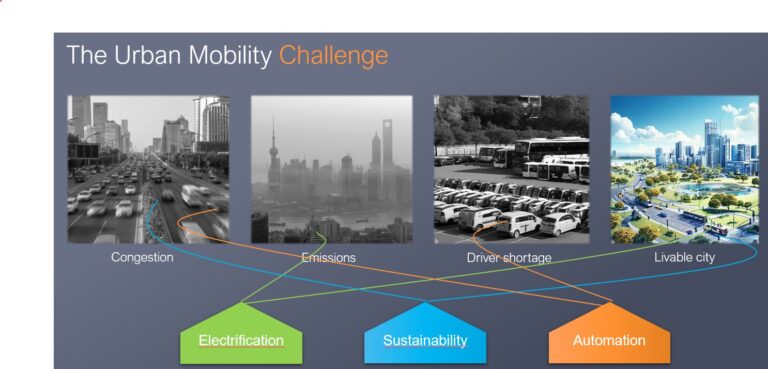 AAVI recently caught up with Zeekr’s senior AD technical specialist, autonomous driving, Vivetha Natterjee, who will examine how to build greater public trust in AVs at this June’s ADAS & Autonomous Vehicle Technology Expo Europe conference.
AAVI recently caught up with Zeekr’s senior AD technical specialist, autonomous driving, Vivetha Natterjee, who will examine how to build greater public trust in AVs at this June’s ADAS & Autonomous Vehicle Technology Expo Europe conference.
Vivetha has over a decade of experience working with autonomous vehicles and safety deployed in Volvo trucks and cars. She has also taken part in key projects involving autonomous harbor trucks and robotaxis. With her background in robotics, Vivetha strongly believes that safe autonomous vehicles – be they L3 or L4 – can share the traffic along with human drivers. She aims to realize trust in autonomous vehicles with the help of AI.
What is your current role and how did you first get into AVs?
I work as senior technical specialist for autonomous driving at Zeekr Technology Europe. I’m a roboticist by passion and education, and autonomous trucks and passenger vehicles have been my focus for the last 12 years.
What will you talk about in your presentation in Stuttgart in June?
Mobility as a Service (MaaS) is one of the most upcoming yet underplayed business segments in the transportation industry. While technology is expected to spearhead this revolution, current regulations are far behind any real scale-up in the actual market, regardless of continent. My presentation is intended to give a perspective on how the ‘intelligence’ – i.e. the perception and navigation, etc required – has existed for decades in warehouses, the mining industry and other off-highway use cases. However, customer acceptance and co-existence with other road users is the real problem that needs solving, especially how AVs will interact with highly unpredictable human-driven traffic. During my presentation, I will look at how advanced AI can help overcome this barrier to have a safer traffic environment.
What are some of the current problems with public trust in autonomous vehicles?
When it comes to public trust and acceptance, seeing is believing. An inhabitant of San Francisco is likely to be more agreeable to autonomous driving than an inhabitant of New York. This is purely because residents of San Francisco (and a few other US cities) are accustomed to seeing robotaxis on the streets. Studies also show that it only takes a 10-minute ride for the utmost skeptic to trust an AV. If anything, for an AV passenger, over-trust can be an issue.
With regard to national or international acceptance, most public authorities today are willing to let an AV on the streets as long as the vehicle manufacturer can prove that the AV is beyond unreasonable risk – a classic Catch 22 situation.
Many pilot projects have limited funding so they tend to have a very short shelf life. Scaling beyond initial testing is a completely different animal but will be the key for commercial operations.
Waymo is one company that has begun to scale. Zeekr’s M-Vision vehicles, purpose-built for robotaxi operations, will be part of the Waymo One fleet in the US.
As far as Europe is concerned, it is the public transportation authorities that offer the best use cases for robotaxi and autonomous shuttle operations. Here, safe and cautious deployment is the priority. In my opinion, there needs to be a joint effort from different fleet customers and authorities to crowd source a scaled-up deployment to meet the volume requirement for autonomous vehicles in public transportation operations.
In your presentation synopsis you mention a ‘multipillared’ approach. What is this?
Today there are mainly two schools of thought with regard to AV safety assurance. One is where millions of miles are required to understand the surrounding use case and to perform the mean-time-between-failure analysis. The other is more toward developing a product and fitting it to the required use case by traditional verification and validation methods. While both approaches have their own pros and cons, the human element, be it the rider, passenger, pedestrian or the driver of the surrounding traffic – all are treated as an afterthought.
It is important to address the human element from the beginning. Trust, as we discussed above, and changing behaviors with expanding ODDs should be included from the beginning. In my proposed multipillared approach, data, verification and human-centric development all need to be considered equally in the development and deployment phases of the product.
Where and how could safety be best improved, in your opinion?
Safety is a shared responsibility. In the grand scale of things, when we address congestion, emissions and sustainable future initiatives, safety should always be the priority. For example, imagine purely autonomous electrified vehicles in the streets of the Ultra Low Emission Zone in London. This would drastically improve both safety and sustainability.
Vivetha’s presentation will take place on Tuesday, June 4, 2024, at the conference (rates apply) running alongside the free-to-attend exhibition. You can see the full conference speaker list here; and you can book your pass (rates apply), here.
This article first appeared in the April 2024 issue of ADAS & Autonomous Vehicle International.



